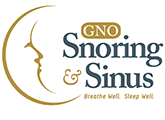If the eustachian tubes connecting your middle ears to your throat can’t perform this task efficiently, the resulting air pressure and mucus accumulation can cause serious problems. If you suffer from eustachian tube dysfunction, you may benefit greatly from a minimally invasive procedure known as eustachian tube dilation.
Eustachian tube dilation, commonly abbreviated as ETD, can open up swollen, inflamed passages as an effective alternative to drugs or major surgery. Check out the answers to these frequently asked questions to learn about this potential solution to eustachian tube dysfunction and its potential complications.
Who Can Benefit From Eustachian Tube Dilation?
While eustachian tube dysfunction affects a large percentage of young children, it can strike adults as well. If your eustachian tubes can’t open properly to equalize air pressure and drain mucus, you may experience chronic pain, tickling, pressure, or ringing in your ears. You can even suffer from dizziness or loss of balance.
People who have frequent colds, allergies, or acid reflux problems can develop eustachian tube dysfunction due to inflammation and swelling, which narrows the tubes’ inner diameter and creates blockages. These individuals may get the relief they need from eustachian tube dilation.
How Do ENT Specialists Perform Eustachian Tube Dilation?
Before you undergo eustachian tube dilation, your ENT specialist must first confirm that you have this disorder and not some lookalike issue such as a sinus infection. The specialist will ask you about your symptoms while examining your throat, nasal passages, and ear canals.
Eustachian tube dilation counts as an outpatient procedure. Your ENT specialist inserts a deflated balloon into your nose using an elongated tool called an endoscope. Once the balloon has reached the eustachian tube entrance, the specialist inflates the balloon just long enough for this opening to adjust to a wider diameter.
What Advantages Does This Technique Have Over Alternatives?
Eustachian tube dilation can offer more long-lasting relief than home care measures to open up those troublesome passages. You will appreciate the difference if you have grown tired of chewing gum or yawning constantly to pop your ears, or if you do not want to consume a steady diet of antihistamines or anti-inflammatory drugs.
This technique also offers advantages over more invasive procedures such as eardrum surgery and ear tube installation. The procedure only takes a few minutes to complete, with no need for a hospital stay. It also requires almost no post-procedure downtime while working just as well as major surgery.
Eustachian tube dilation does more than merely equalize air pressure and improve fluid drainage. It can help the tissues in these structures remodel themselves into a more normal form. By contrast, ear tubes can fall out and require periodic replacement without addressing the underlying structural issues.
What Can You Expect After Eustachian Tube Dilation?
You might experience some mild bleeding and discomfort immediately after undergoing eustachian tube dilation. Ask your ENT specialist about safe options for relieving your symptoms, including over-the-counter pain relievers and soothing saline rinses. If your symptoms persist or get worse, schedule a follow-up exam.
Although eustachian tube dilation offers speedier recuperation than other ETD treatments, take certain precautions in the days and weeks following your procedure. Focus on resting the first day, then avoid popping your ears for at least a week. Wait a couple of weeks before engaging in vigorous activities.
If you think you could benefit from treatment for chronic eustachian tube dysfunction, schedule a consultation with the experts at GNO Snoring and Sinus. We can confirm a case of eustachian tube dysfunction, providing minimally invasive treatment to ease your congestion, pressure, and pain. Contact our ENT clinic today.

